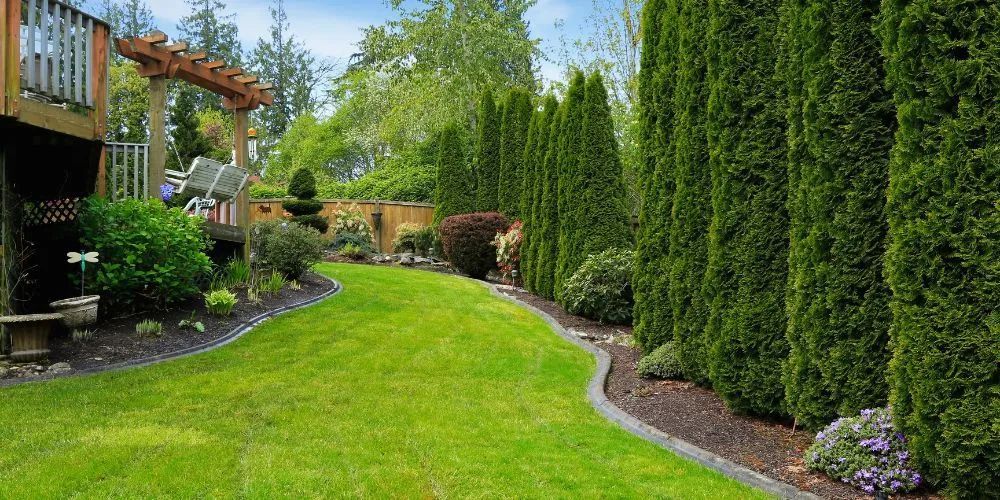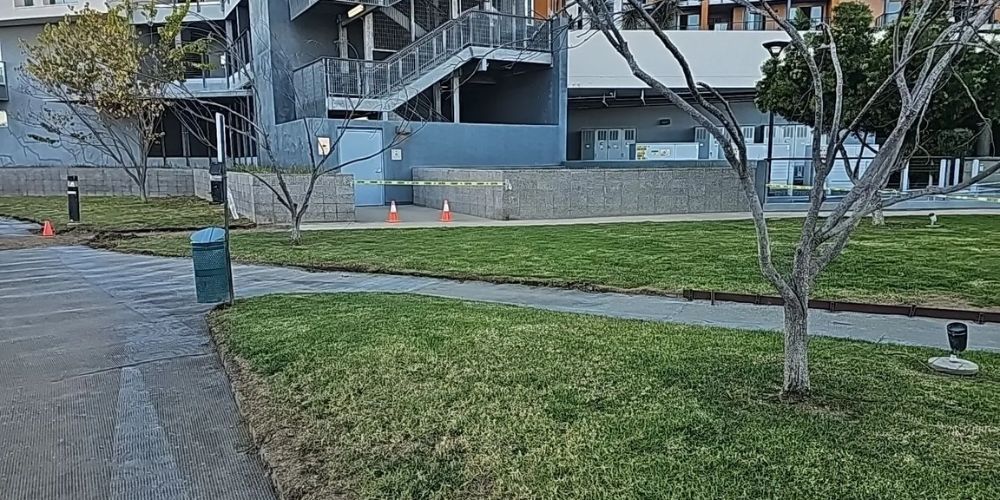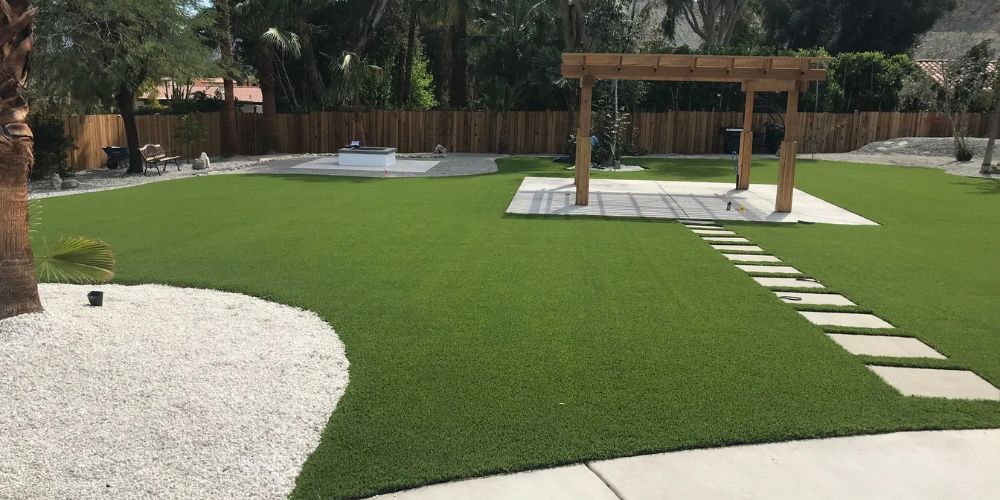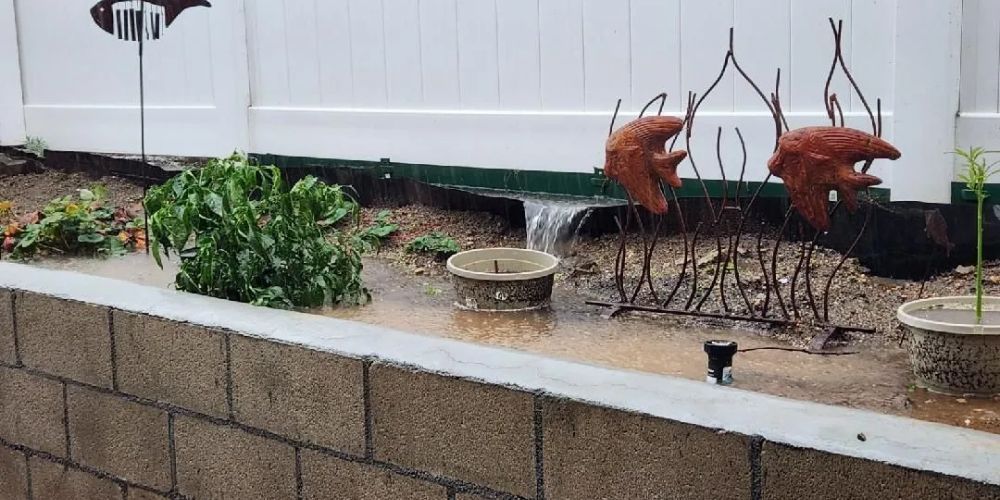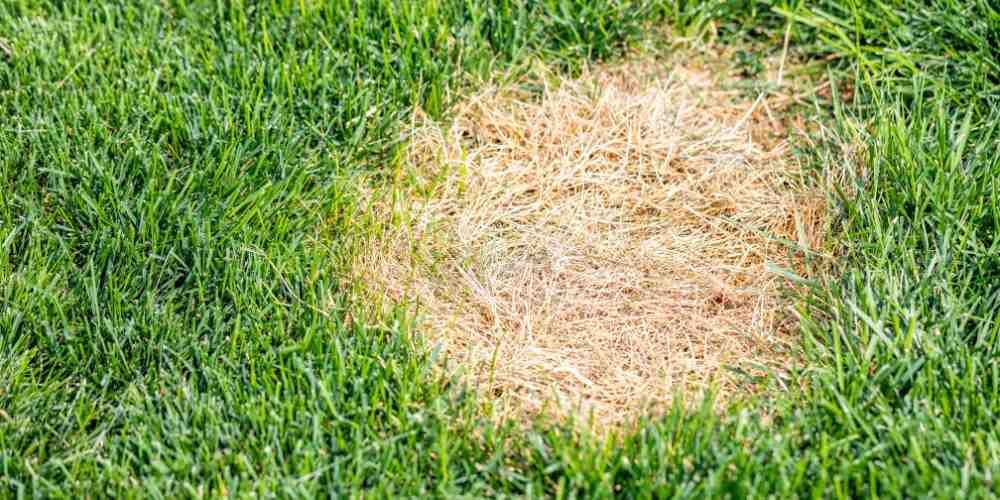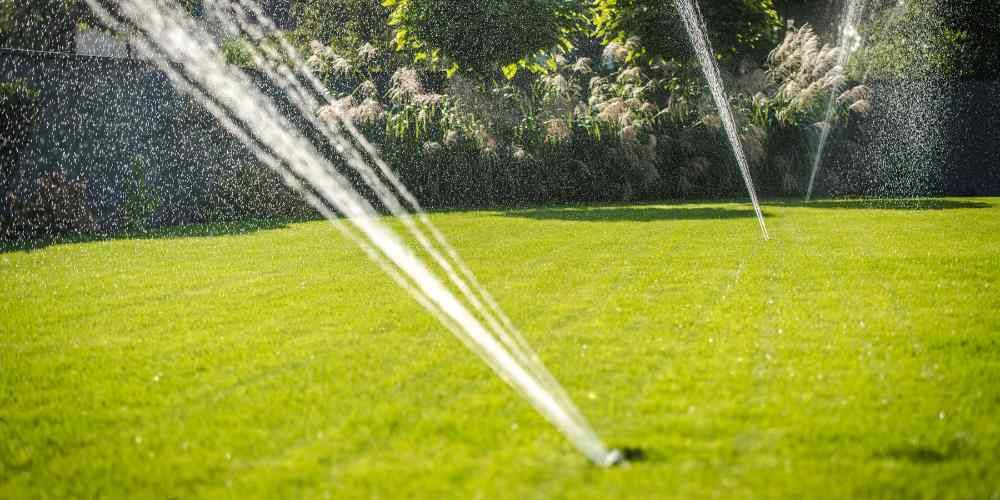What is the Importance of Commercial Landscape Maintenance?
Commercial landscape maintenance is a must-have activity for businesses ready to invite a pleasant and professional atmosphere outdoors into their yards.
The appearance of your landscaping significantly affects your curb appeal and creates an impression on your customers. A poorly designed or maintained landscape can suggest to potential clients that you don’t care about your property, which may also impact its overall value. In severe cases, an unkempt or inadequately designed landscape can pose hazards for customers, leading to slips, falls, and other accidents.
Focus on improving your curb appeal to create a great first impression for customers. Start by developing and maintaining a year-round landscaping maintenance plan for your commercial property.
What Is Commercial Landscape Maintenance?
Commercial landscape maintenance regularly involves lawn care and outdoor spaces surrounding corporate business property, office complexes, retail centers, and other commercial entities. It differs from residential landscaping and requires a strategic approach in aesthetics, functionality, and sustainability over the long term to create a good impression on clients, employees, and all other visitors to the company. Core services include lawn mowing, tree and shrub maintenance pruning, pest and weed control, seasonal color plantings, irrigation management, and trash removal.
It will remain in an attractive, safe, and healthy landscape throughout the year, which helps with the property's overall appeal. Proper maintenance will also support environmental health since native plants are promoted, water usage is reduced, and soil erosion is reduced.
What Are the Common Challenges in Commercial Landscape Maintenance?

Seasonal Variability:
Weather conditions throughout a yearly cycle have brought challenges concerning maintaining plants in good health through a hot summer, avoiding frost damage in winter, and managing autumn leaf litter. Different seasons require different practices to care for landscapes for their best aesthetic appearance.
Pest and Weed Control:
This is an essential but challenging thing to be kept. The processes of pest and weed growth might probably destroy the plants, as well as unbalance the beauty of the landscape. Continuous monitoring and using friendly environmental methods can lead to an effective ecosystem balance without causing the over-application of chemicals in pest control.
Budget Constraints:
Appropriating a budget amount for regular maintenance is difficult. Solutions must be reasonably priced but without cutting corners, especially when properties are large, and the landscaping needs may be excessive.
Soil Health and Erosion:
Poor soil conditions and erosion issues reduce vegetation growth and steadiness; extra care and additional soil management methods are needed in these cases. Treatment for soil compaction, nutrient deficiencies, and erosion control is critical for the long-term health of the landscape.
Water Management:
This deals with irrigation and water use in landscape care. Specifically, ensuring that plants get enough water, that water is not wasted, or that over-watering does not happen can sometimes be challenging, especially in arid areas where water conservation is a priority.
Importance of Offering Commercial Landscaping Maintenance
Simply, commercial landscape maintenance is essential for any business to present a positive and professional image. The well-kept landscape is inviting, adds value to curb appeal, and can make an excellent first impression on customers, prospects, and employees. Not only pleasing to the eye but there are even further safety-related benefits with good landscape maintenance: overgrown plants trimmed back, providing clear passage; removal of potential hazards such as fallen branches or slippery surfaces. Regular maintenance will also preserve the property value because healthy and thriving landscapes have fewer requirements for costly rehabilitation in the long run.
A well-designed maintenance program also supports environmental sustainability by introducing sustainability practices within the program, such as using native plants, water conservation, and reducing chemical inputs.
Companies that invest in regular landscaping are aesthetically pleasing and prove their interest in green practices. When applied to competitive industries, such efforts may make a brand different, as environmentally conscious consumers appreciate attractive and sustainable landscapes and contribute to the overall brand experience.
Benefits of Regular Landscape Maintenance
Value Addition in Curb Appeal:
Regular landscape maintenance makes the outdoors appealing and inviting, leaving a good impression on clients, visitors, or employees. A well-kept landscape reflects professionalism and attention to detail.
Increased Property Value:
Consistent care helps maintain, or even increase, the value of commercial properties. Healthy plants, neatly trimmed lawns, and clean walkways are all part of a polished, high-value appearance that can attract potential investors or tenants.
Improved Environmental Health:
Regular maintenance helps maintain a healthy ecosystem by ensuring plant vigor, reducing soil erosion, and encouraging biodiversity. Mulching and pest management practices also maintain a balanced and sustainable environment.
Enhanced Safety and Accessibility:
The point of regular care is to handle overgrowth, remove debris, and avert other problems that may make the pathways slippery to walk on or the walks impassable. It's essential to provide a safe, accessible environment for employees and visitors.
7 Steps to Designing a Commercial Landscape Maintenance Plan
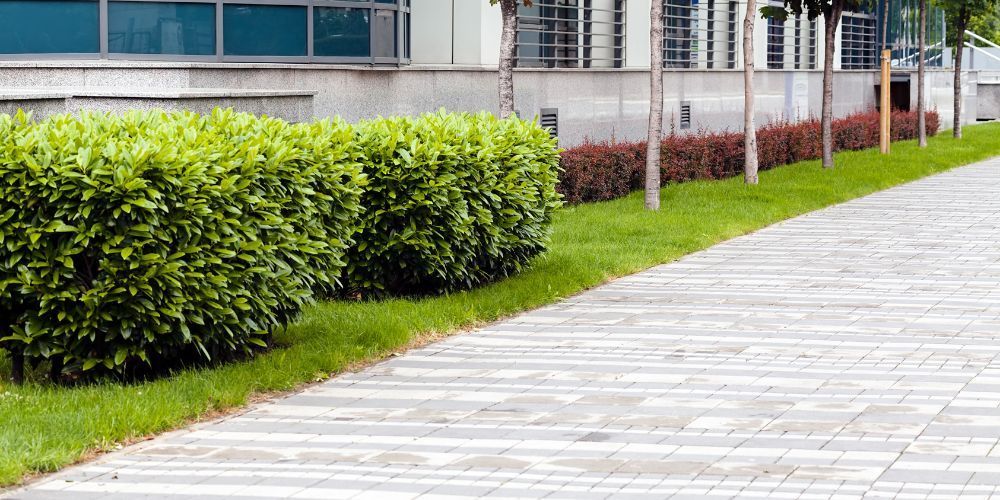
Analyze the Property's Needs:
First, one must assess the landscape's needs regarding plant types, soil conditions, and prevailing problems such as soil erosion or pest infestation. It helps in the development of customized plans.
Set Clear Objectives:
The objectives of the maintenance plan could enhance aesthetics, safety, or even sustainability. Clear objectives guide actions and help prioritize tasks for more effective results.
Develop a Seasonal Schedule:
Create a maintenance calendar indicating what tasks must be completed each season. It will include everything from fertilizing and pruning to planting. This would allow timely care and adjustment to seasonal challenges.
Irrigation Management Plan:
Build an effective watering plan that delivers water with conservation in mind and meets the landscape's hydration needs. Regular adjustments are made for weather and seasonal changes.
Pest and Weed Control Measures:
Incorporated methods of integrated pest management to effectively control pests and weeds with minimum environmental disturbance for sustainable plant health.
Budget Plan and Resource Allocation:
Determine the budget and use the available resources judiciously to achieve two goals: quality and cost efficiency for maintenance sustainability.
Monitor and Adjust:
The current landscape will be periodically reviewed to ensure that any emerging problems are tackled in the plan, which will continue due to the plan's consistent effectiveness.
Also Read: The Power of Investing in Commercial Landscaping
Conclusion
Commercial landscape maintenance is essential to property appeal, safety, and environmental health. A well-planned maintenance plan can completely transform a business enterprise's outdoors, improving the area's look and value. The following tips will help businesses maintain a healthy, professional landscape throughout the year.
One can hire a reputable company like Landtech Scenery Inc. for professional service. It has a team of experts offering comprehensive services to suit the individual requirements of commercial landscapers and commercial landscaping with appealing and sustainable landscapes.
Frequently Asked Questions
1 What is commercial landscape maintenance?
Commercial landscaping is an extension of horticulture that involves planning, design, installation, and maintenance to create landscapes reflecting a business's personality and values while being economically viable and visually appealing.
2 What does maintenance mean in landscaping?
Landscape maintenance is the art and vocation of keeping a landscape healthy, clean, safe, and attractive, typically in a garden, yard, park, institutional setting, or estate.
3 What is a commercial lawn?
Commercial lawn means any cultivated turf, public or private, other than residential lawns, cultivated for aesthetic purposes.
